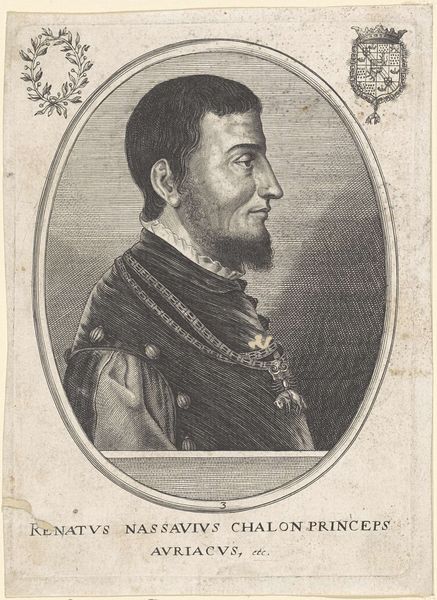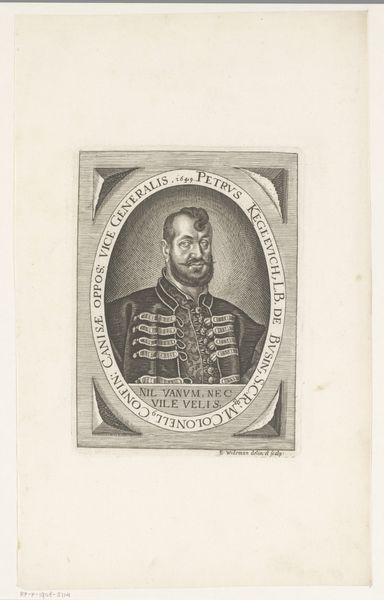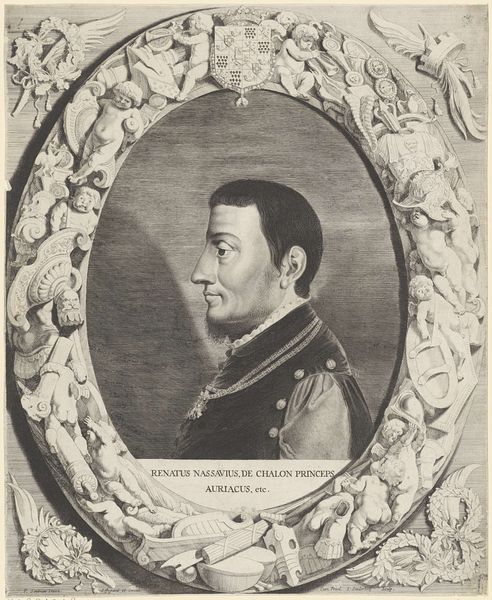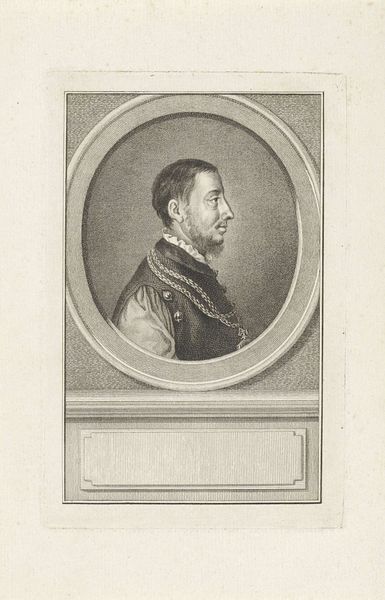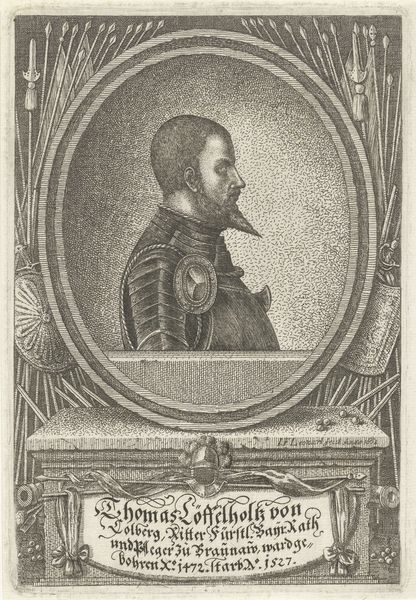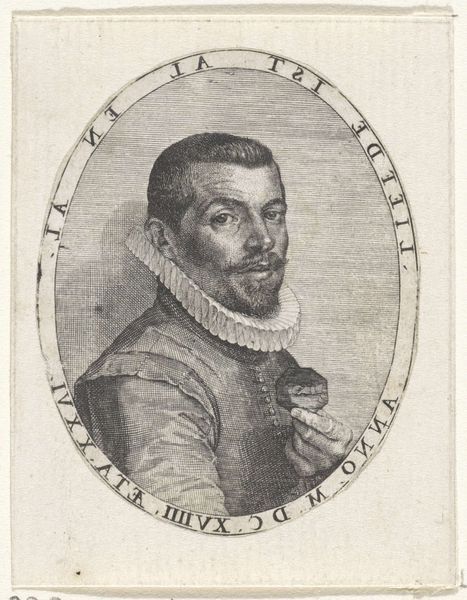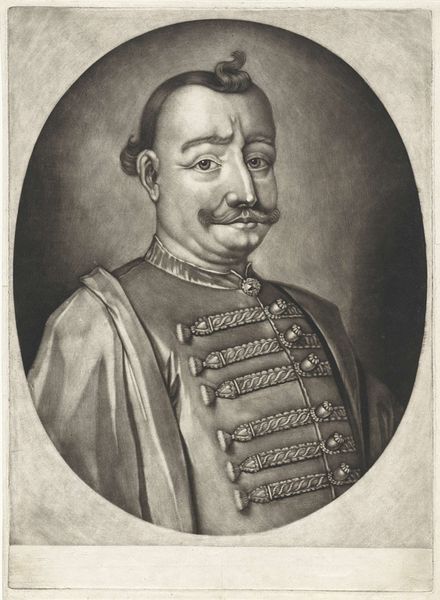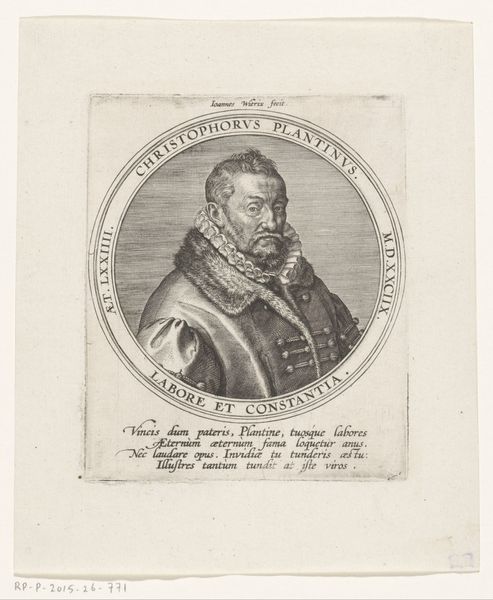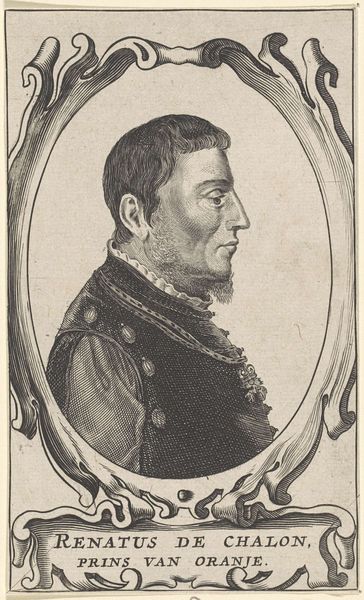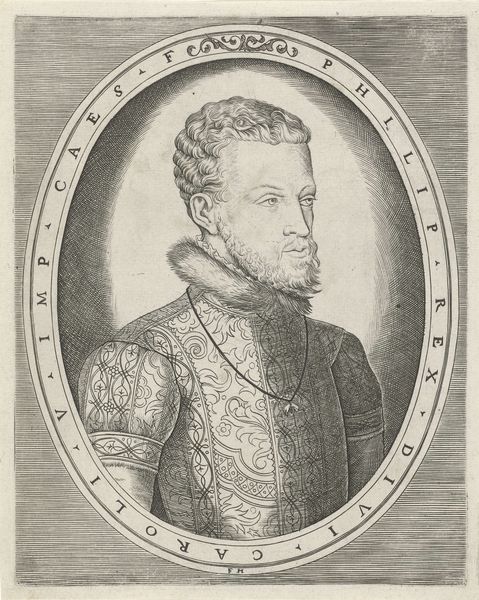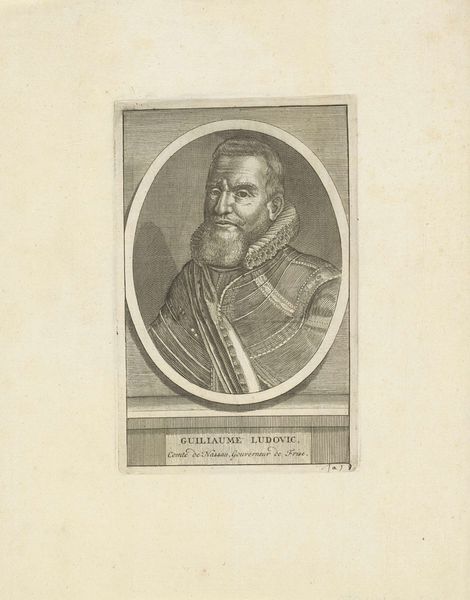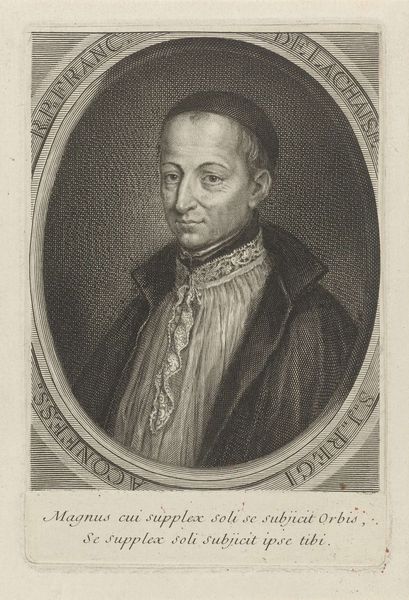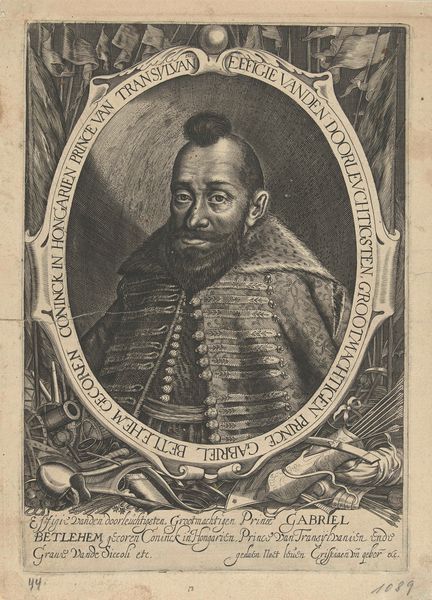
print, engraving
#
portrait
#
baroque
#
portrait image
# print
#
engraving
Dimensions: height 416 mm, width 301 mm
Copyright: Rijks Museum: Open Domain
This portrait of René de Châlon, Prince of Orange, was made by Crispijn van den Queborn in the early 17th century, using engraving. This is a printmaking technique where an image is incised into a metal plate, which is then inked and pressed onto paper. Consider the labor involved in creating this image; the intense concentration and skill required to translate a likeness into a network of fine lines, cross-hatching to build up tone and volume, and precise lettering. Notice how the crisp lines and shading give shape to the Prince’s face, clothing, and even the ornate frame surrounding him. The choice of engraving as a medium is significant, as it allowed for the mass production and distribution of images. This print not only commemorates the Prince but also speaks to the rise of print culture and the increasing importance of visual representation in society. It challenges our traditional distinctions between fine art and craft, highlighting the skill, labor, and social context embedded within this seemingly simple portrait.
Comments
No comments
Be the first to comment and join the conversation on the ultimate creative platform.
